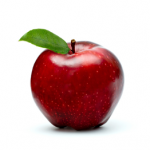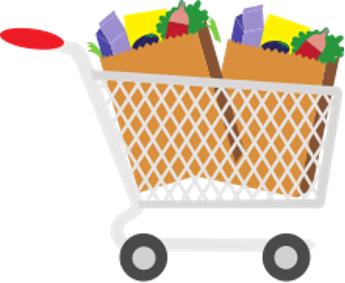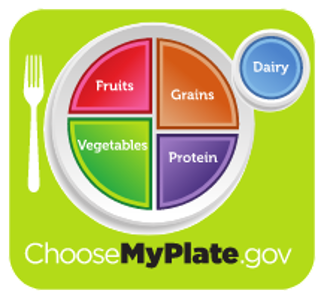Written by UConn Dietetic Intern Amanda Celone
“All natural.” “Organic.” “Made with real fruit.” “Made with whole grains.” Buzz phrases like these are often seen on food packages to get customers to buy a product. The market for organic and natural food has grown a lot in recent years. Large companies spend millions of dollars to market what they want you to believe are their “healthier” products1. Sometimes those products are not as healthy as they seem. They often have health claims written on the front of the package, but if you check out the nutrition label and the ingredients on the back of the package, you may find that the actual ingredients, preservatives, chemicals or additives make the products not that healthy.
 Take the example of organic fruit snacks. They often have claims on the box like “made with real fruit” or “organic”. But the ingredients will show added sugar just like the regular brand of fruit snacks. Fruit snacks are okay once in a while as a treat or dessert, but most of the time it’s best to try a healthier alternative – instead of fruit snacks, try whole fruit for a snack. Having a piece of fruit – organic or not – is going to be a healthier choice than the organic fruit snacks with added sugar.
Take the example of organic fruit snacks. They often have claims on the box like “made with real fruit” or “organic”. But the ingredients will show added sugar just like the regular brand of fruit snacks. Fruit snacks are okay once in a while as a treat or dessert, but most of the time it’s best to try a healthier alternative – instead of fruit snacks, try whole fruit for a snack. Having a piece of fruit – organic or not – is going to be a healthier choice than the organic fruit snacks with added sugar.
Another example is a natural brand of frozen dinner versus a regular brand. Most of the time both kinds will have a lot of added sodium; and they both may have refined grains like white  pasta. If buying a frozen dinner, check for lower sodium meals and as few additives as possible. Better yet, cook for yourself and make extra portions. Freeze the leftovers in individual containers for another convenient meal!
pasta. If buying a frozen dinner, check for lower sodium meals and as few additives as possible. Better yet, cook for yourself and make extra portions. Freeze the leftovers in individual containers for another convenient meal!
Don’t fall into product marketing traps.
Shop smart and check the labels2:
- Keep added sugar to a minimum.
- Look for low sodium products with 140 milligrams of sodium or less.
- Look for whole grains as the first grain listed in the ingredients – sometimes they advertise “made with whole grains” on the front of the package when only a small amount of ingredients are whole grains.
- Remember that on an ingredients list, what’s listed first to last are highest to lowest amounts of ingredients.
MyPlate is a great tool to help you plan healthy meals!

Using MyPlate as a visual model can be helpful. Here are MyPlate recommendations per group3:
- Make half your grains whole grains.
- Vary your proteins.
- Make half your plate fruits and vegetables.
- Move to low-fat or fat-free milk and or yogurt.
Try this recipe – Roasted Chicken and Vegetables
Ingredients:
- 5 pounds boneless chicken thighs
- 1 pound small potatoes, cut in half
- 1 teaspoon salt
- 1 tablespoon maple syrup
- 1 tablespoon mustard
- 1 pound broccoli, cut in 1-inch pieces
Directions:
- Preheat oven to 400°F.
- Season chicken and potatoes with salt. Place on a 13×18-inch sheet pan lined with aluminum foil and put in the oven for 15 minutes.
- Mix maple syrup and mustard in a bowl.
- Flip the chicken over and cover with the sauce.
- Add broccoli to the sheet pan. Cook for 15 more minutes (until chicken and potatoes are crispy). Cool for 10 minutes before serving.
Citations:
- Breen, M. et. al., (2020). Prevalence of Product Claims and Marketing Buzzwords Found on Health Food Snack Products Does Not Relate to Nutrient Profile. Nutrients, 12(5),1513. https://doi.org/10.3390/nu12051513
- “How to Understand and Use the Nutrition Facts Label”, https://www.fda.gov/food/new-nutrition-facts-label/how-understand-and-use-nutrition-facts-label
- “Explore the MyPlate Food Groups”, https://www.fda.gov/food/new-nutrition-facts-label/how-understand-and-use-nutrition-facts-label
This material is funded by UDSA’s Supplemental Nutrition Assistance Program (SNAP).
This institution is an equal opportunity employer.